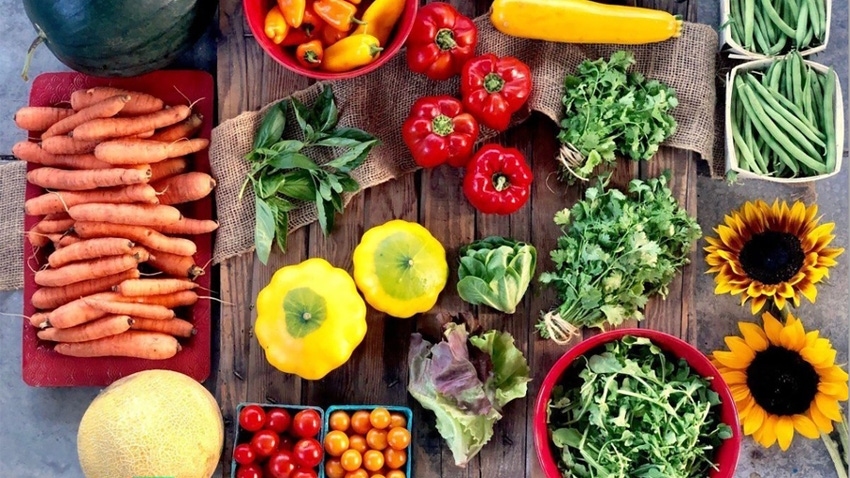December 26, 2023

by Alekhya Ankaraju
Each week, Dan and Julie Perkins court surprise through their Community Supported Agriculture batches. Members of the DeMotte, Ind., community come pick up vegetables set aside for that batch.
Perkins Good Earth Farm is responsible for producing a variety of specialty crops. But the family-owned farm takes things a step further by offering shares to people in their community. It’s called a CSA program.
“Community Supported Agriculture is a form of serving our customers like a magazine subscription, where a family buys into the farm, pays upfront and gets a weekly subscription of vegetables,” Dan says.
While Community Supported Agriculture is not new, the Perkins family found that the concept appealed to them. “I caught the farming bug in college and worked on numerous farms. And the CSA farms I worked on were always my favorite,” Dan explains.
Tying together food and community
Dan was drawn to the sense of community and the way people were in touch with the food. There was both ritual and revelation in the concept of Community Supported Agriculture.
So, the Perkinses did a trial run in 2010. They couldn’t balance it with life at the time. But they brought it back in 2013, just for fall. They added spring and summer in 2019, and then added winter in 2020. The current CSA program offered by Perkins Good Earth Farm is year-round.
“Dan and Julie Perkins have really shown us how to eat in season, how to preserve and store fresh produce, how to cook with it,” says Kelsey Smith, a community member. “We’ve really explored a lot of new vegetables and ways to cook with them.”
The Perkins family goes above and beyond, introducing even somewhat atypical vegetables like fennel, kohlrabi, watermelon radish and arugula into their CSA sets. This is in addition to cabbage, garlic, lettuce, basil and more, depending upon the season.
Risks and rewards
But giving back is not without its challenges. Although the system is set up to provide a variety of crops, the variety can dwindle with overproducing or underproducing certain crops. An inexperienced farmer could easily be overwhelmed by kale or beets, or inadvertently provide just smatterings of vegetables.
“It’s a fine art to give people the vegetables they want and need,” Dan says.
This is compounded by a grower’s ability to connect with the community.
“I think another challenge is setting up systems where you actually get to know your CSA members, assuming that’s valuable to them,” Julie says.
The goal of CSA is to create something beneficial to both growers and communities. But the grower’s struggle to persevere is something that lingers, only mitigated by feedback from the community.
“We like meeting in person,” Julie says. “I think that helps us know who we’re growing for. We literally see them. And seeing our customers in person is super encouraging.”
It takes a lot to continue to maintain a CSA system, but for Dan and Julie, they find it’s worth it.
“We as a community share in the risks and rewards of our farm,” Dan says.
Ankaraju is a senior in ag communication at Purdue University.
You May Also Like




